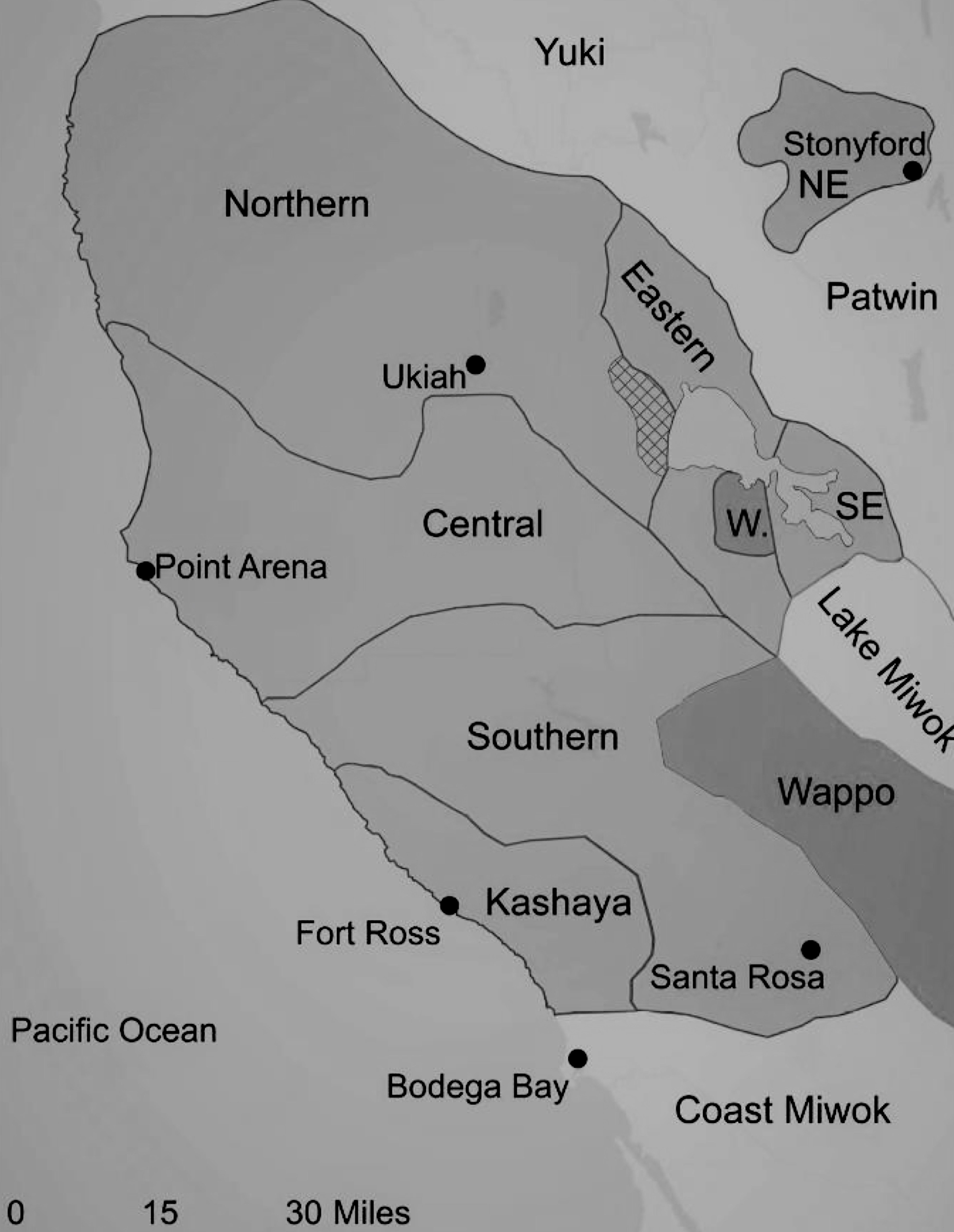Southern Pomo
The traditional Southern Pomo language area is on the lower Russian River, in the Dry Creek Valley, and on the Santa Rosa plain. In pre-contact times, the Pomoan languages together probably had around 8,000 speakers (Kroeber 1925). In the 21st century, there are only a handful of first-language speakers of Southern Pomo. However, tribal members and language activists have been pursuing language revitalization and reclamation.

Southern Pomo (also called “Gallinomero”) is one of seven languages comprising the Pomoan language family; the others are Central Pomo, Eastern Pomo, Kashaya, Northeastern Pomo, Northern Pomo, and Southeastern Pomo. Together, the Pomoan languages form one branch of the hypothesized Hokan language family, the other members of which are Chimariko, Esselen, Karuk, the Palaihnihan languages (Achumawi and Atsugewi), Salinan, the Shastan languages (Konomihu, New River Shasta, Okwanuchu, and Shasta), Washo, Yana, and the Yuman languages (Cocopa, Kiliwa, Kumeyaay, Maricopa, Mojave, Pai, Paipai, and Quechan).
Selected archival materials at Berkeley
Selected materials in other archives
Further reading
- Barrett, S. A. 1908. The ethno-geography of the Pomo and neighboring Indians. University of California Publications in American Archaeology and Ethnology 6:1-322. [PDF]
- Oswalt, Robert L. 1977. Retribution for mate-stealing (Southern Pomo). In Victor Golla and Shirley Silver, eds. Northern Californian texts, pp. 71-81. Chicago: University of Chicago Press.
- Walker, Neil Alexander. 2013. A Grammar of Southern Pomo: An Indigenous Language of California. Ph.D. dissertation, University of California, Santa Barbara. [PDF]
- Walker, Neil Alexander. 2020. A Grammar of Southern Pomo. Lincoln: Nebraska University Press.